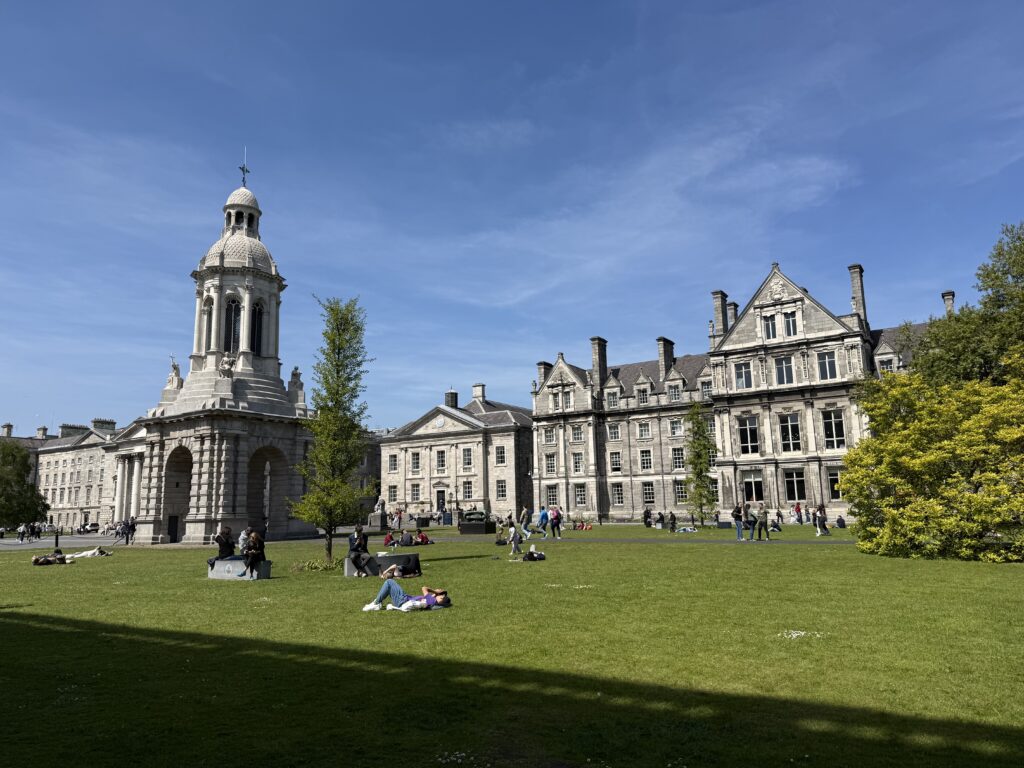DUBLIN — The Long Room of Trinity College Library is one of the most photographed and revered library spaces in the world. Opened in 1732, it houses 200,000 of the oldest books in Ireland. Marble busts line the central aisle, carved likenesses of great thinkers from Aristotle to Newton. Towering oak shelves reach to a vaulted ceiling. For centuries, it has stood as a symbol of memory, scholarship, and civilization itself.
Now, the shelves are empty.
In early 2024, the university began a years-long effort to remove every volume from the Long Room for conservation and restoration. The books are being cataloged, cleaned, and stabilized. New climate controls, fire suppression systems, and infrastructure upgrades will be installed. The space will remain closed to the public until 2027.

Library officials describe the project as necessary and overdue. The historic building and its contents are vulnerable to environmental damage, pests, and structural decay. Without intervention, irreplaceable works could be lost. The goal is preservation.
But the absence of the books — even temporary — is visually and emotionally jarring. The Long Room, emptied, reveals a deeper vulnerability, one that raises questions about how modern civilizations store and protect their most essential knowledge.
Trinity’s collection includes early editions of Newton, Darwin, and Locke. It contains medieval texts in Latin and Irish, rare scientific treatises, and printed records of laws, rituals, and philosophy from across centuries. While many of the volumes have been digitized, their physical forms represent a continuity of memory that transcends the screen.
Books, however, are fragile. They burn. They mold. They degrade. Without preservation efforts like the one now underway at Trinity, physical archives around the world would be at risk. Even with such efforts, disaster — whether natural, man-made, or systemic — could erase hundreds of years of accumulated knowledge in a matter of hours.
What makes the situation more precarious is that physical books no longer represent the bulk of humanity’s active knowledge. Most modern knowledge is digital. Medical protocols, engineering designs, educational material, economic systems, and legal records are all hosted online. Most are stored remotely. The world runs on cloud-based infrastructure that requires electricity, network access, and data centers to function.
The problem is that none of this is resilient. A solar storm, cyberattack, geopolitical event, or global blackout could take entire systems offline. Without electricity, the internet is inaccessible. Without backups in physical form, knowledge disappears. Civilization now depends on fragile supply chains to preserve its memory.
The Long Room project is a reminder. Even the most celebrated archives are vulnerable. The survival of knowledge depends not just on access, but on foresight. If a society cannot preserve its wisdom in durable, decentralized, and accessible forms, it risks repeating the cycles of collapse that have ended civilizations before.
This article is the first in a series exploring the fragility of modern knowledge and what can be learned from how ancient civilizations preserved memory across centuries — and disasters. Upcoming installments will examine why structures like the pyramids still stand, how myth encoded survival knowledge, and what a new preservation effort — known as Project Nalanda — might offer for those who believe knowledge must outlast the system.
Because if memory dies, resilience doesn’t matter.


Leave a Reply